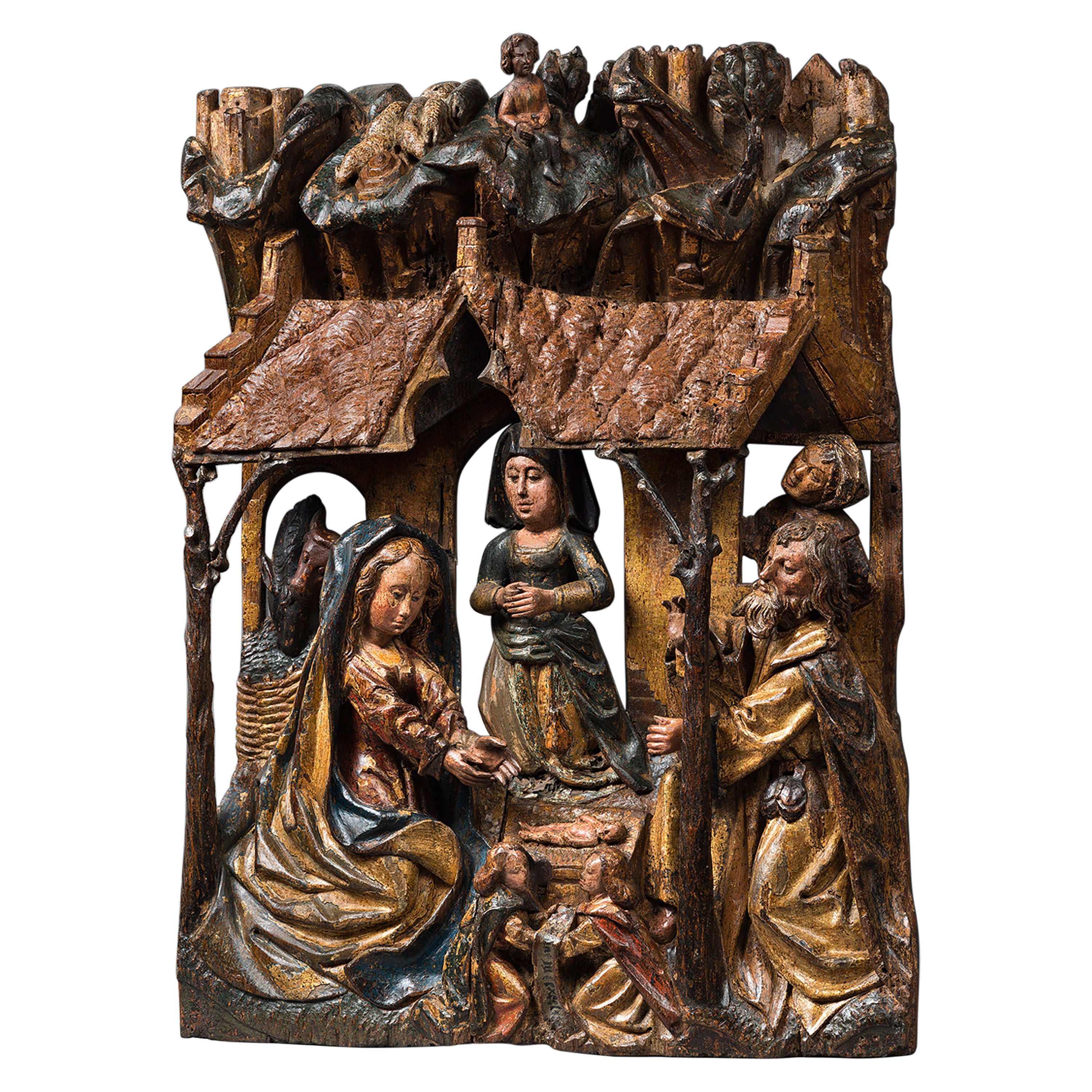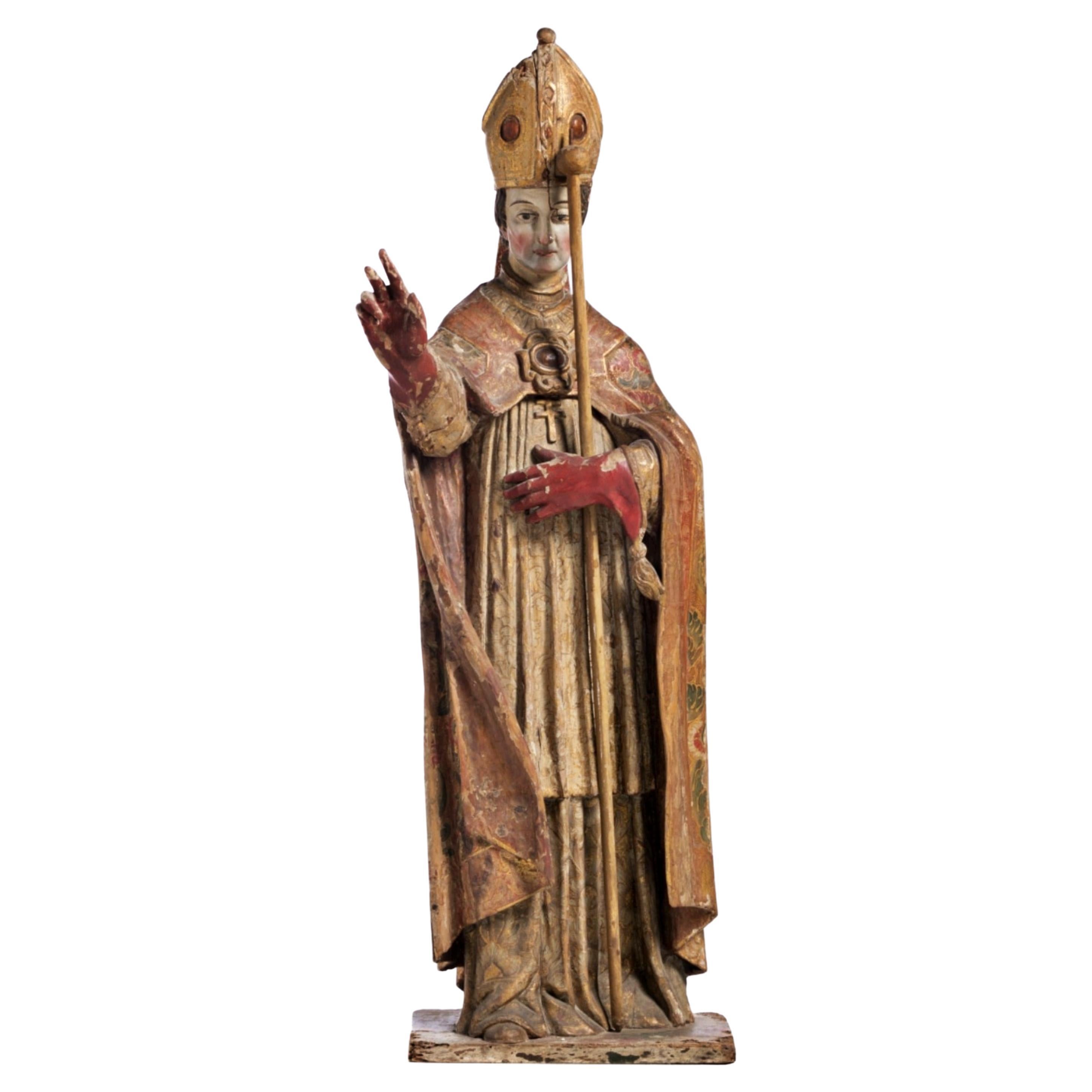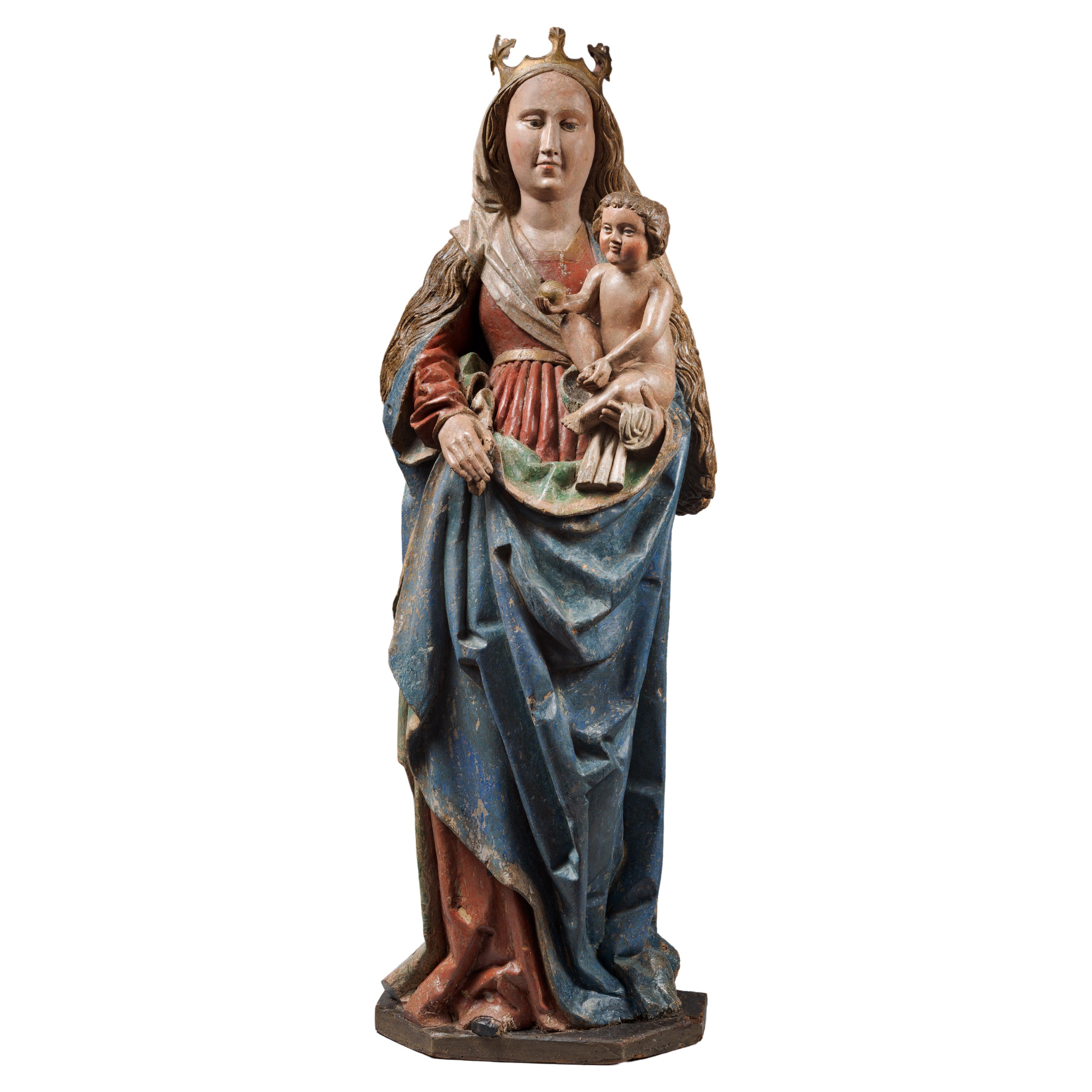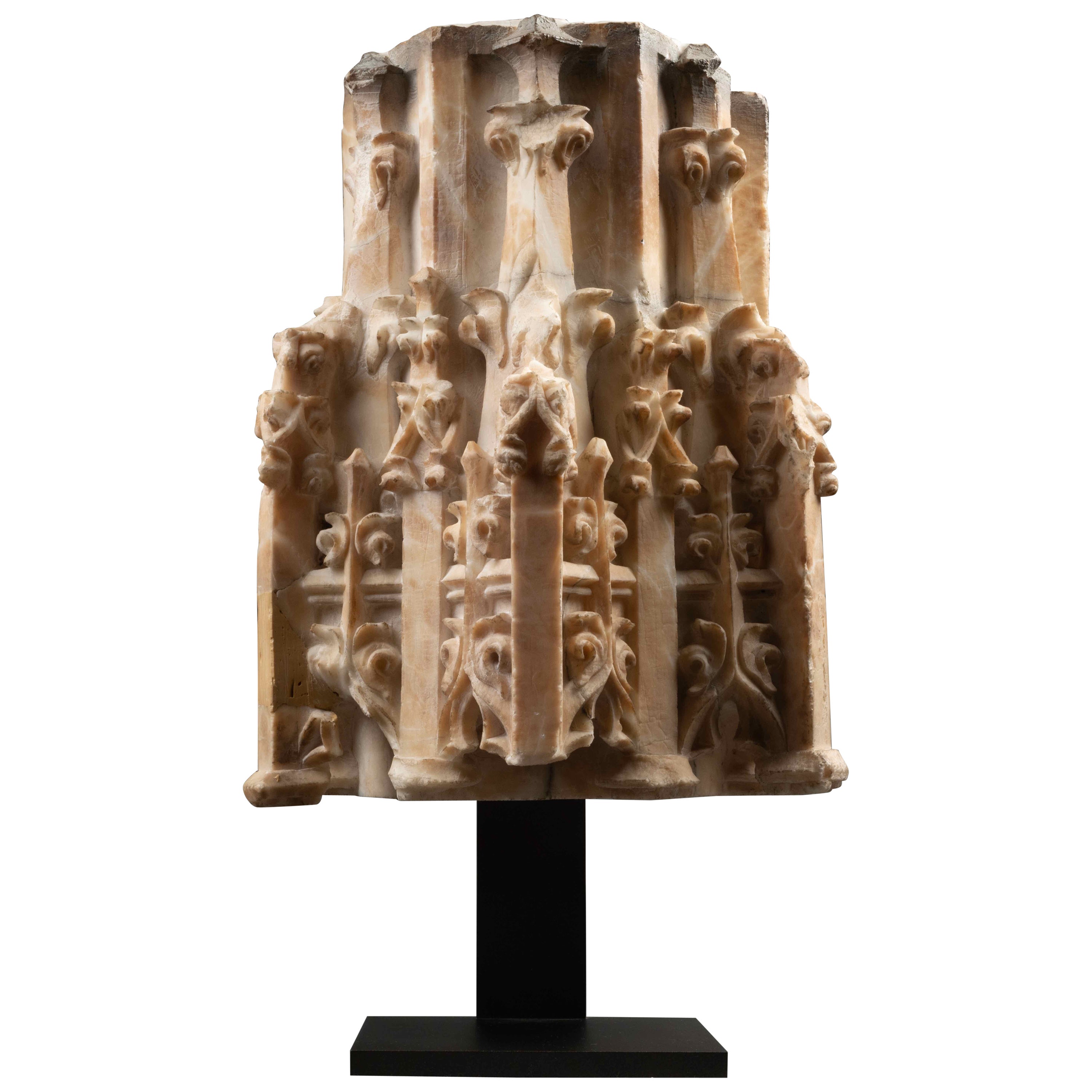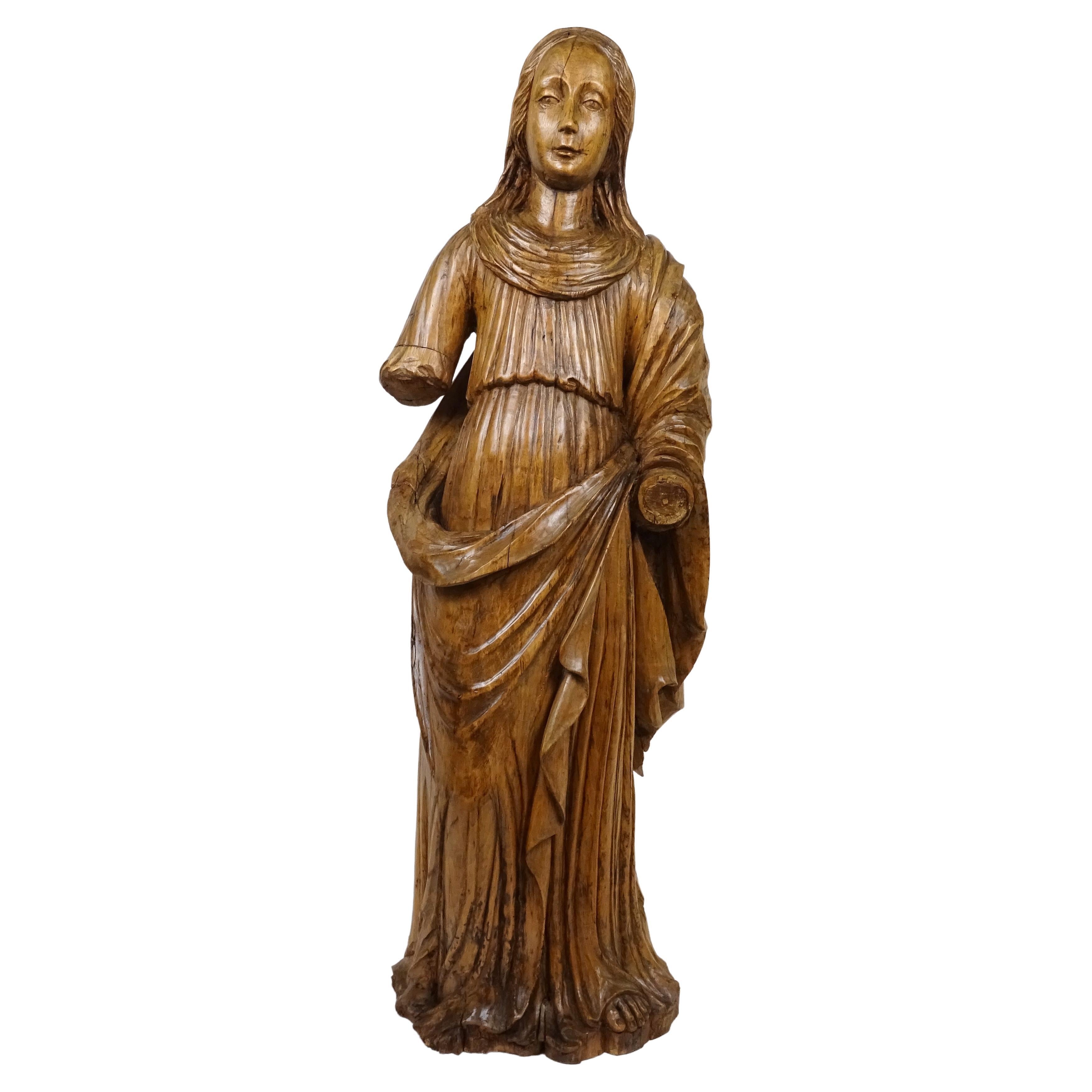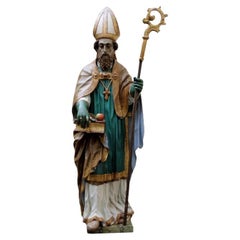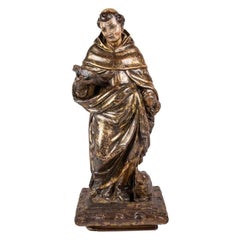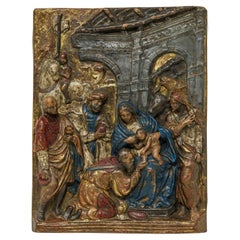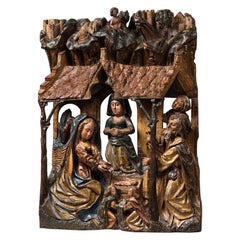
15th Century Holy Bishop Sculpture Polychrome Wood
View Similar Items
Want more images or videos?
Request additional images or videos from the seller
1 of 15
15th Century Holy Bishop Sculpture Polychrome Wood
About the Item
- Dimensions:Height: 59.85 in (152 cm)Width: 13.78 in (35 cm)Depth: 11.82 in (30 cm)
- Style:Medieval (In the Style Of)
- Materials and Techniques:
- Place of Origin:
- Period:
- Date of Manufacture:15th Century
- Condition:Refinished. Wear consistent with age and use.
- Seller Location:Milan, IT
- Reference Number:1stDibs: LU5918226765222

About the Seller
5.0
Vetted Seller
These experienced sellers undergo a comprehensive evaluation by our team of in-house experts.
Established in 2000
1stDibs seller since 2021
26 sales on 1stDibs
Typical response time: 12 hours
More From This SellerView All
- 17th Century St. Nicholas Sculpture Polychrome Carved WoodLocated in Milan, IT17th century St. Nicholas Polychrome carved wood, h. 133 cm In the past, wooden statues were frequently commissioned to artists for the results of intense naturalism that emoti...Category
Antique 17th Century Italian Figurative Sculptures
MaterialsWood
- 18th Century Sant'antonio Abate Sculpture in WoodLocated in Milan, IT18th Century Sant’Antonio Abate Wood, cm alt. 61 Base 25 x 17.5 cm This wooden sculpture depicts Sant’Antoni Abate. Antonio was born in Come i...Category
Antique 18th Century Italian Figurative Sculptures
MaterialsWood
- Adoration of the Magi in polychrome terracotta, 17th centuryLocated in Milan, ITXVII Century Adoration of the Magi Polychrome terracotta, 24 x 18 cm The present relief, made of terracotta that retains the original polychromy, depicts the famous episode in the...Category
Antique 17th Century Figurative Sculptures
MaterialsPottery
- 17th Century St. Paul Sculpture Polychrome and Gilded WoodLocated in Milan, IT17th century. St. Paul Polychrome and gilded wood, 130 x 66 cm The sculpture analyzed here shows a strong plastic and volumetric vigor that gives a sense of immediate natur...Category
Antique 17th Century Italian Wall-mounted Sculptures
MaterialsWood
- First Half of the 18th Century Putti Pair of Sculptures in Gilded WoodLocated in Milan, ITFirst half of the 18th century, Lombardy Putti (2) gilded wood, H 88 cm The work is distinguished by the high artistic quality and the remarkable executive care, as eviden...Category
Antique Early 18th Century Italian Figurative Sculptures
MaterialsWood
- 17th Century Madonna with Child from the Impruneta Tondo Polychrome TerracottaLocated in Milan, ITTuscan school, 17th century Madonna with Child - from the Impruneta Tondo Measures: Polychrome terracotta, 65 x 46 x 10 cm This polychrome terracotta relief, gently jutting...Category
Antique 17th Century Italian Abstract Sculptures
MaterialsTerracotta
You May Also LikeView All
- Late 15th Century Polychrome Wood Carving Depicting the NativityLocated in Saint-Ouen, FRWhile the birth of Christ is briefly told in the Gospel of Luke (2, 7) it is in the apocryphal texts that we find most of the elements and details that have then inspired artists. As of the 14th century and even more of the 15th century the subject of the Adoration of the Child replaces in Western art the scene of the Birth, much favoured in Byzantine art. Instead of being depicted lying with the new-born swathed in the manger, the Virgin is now kneeling, her hands joined in prayer in front of the naked child. This change was probably hastened by the popularity of the visions of Saint Bridget of Sweden to whom the Virgin allegedly appeared to show how she had given birth to Jesus (Visions, VII, chap. 21). Sheltered by a thatch-roofed structure the Virgin is kneeling in front of the Child Jesus. She wears a magnificent red dress under a large gold cloak. Her curled blond hair is partially veiled. The newborn is lying on a straw mat. Joseph is depicted with a parted beard and stands opposite from the Virgin. He wears a tunic and a coat with a purse hanging from the belt. His costume reminds us of the long journey him and Mary have accomplished to reach Bethlehem. Two other women are present. One is looking through the stable’s window to observe the Holy Family while another one kneels in prayer in front of the divine child. The rich costume of the lady might indicate she is a donator. However they could also both represent the women who took part in the birth of Christ, Zelemi and Salome. Salome, incredulous did not believe in the virginal conception of Mary and she is represented far from the scene. The artist has depicted her with an expression of doubt on her face. Zelemi, on the contrary, is a believer. She is rewarded by a place of honour at the heart of the scene, close to Mary. To the left the donkey and ox that have accompanied Mary and Joseph to Bethlehem observe quietly the scene. On the foreground two angels hold a scroll reading an excerpt from the Gloria : “/Gloria/ in excelsis /Deo/.” One of the angels wears a blue cape while the other’s is red Those two colours are very significant as during Middle-Ages blue symbolises hope and red charity. Together they express the hope in redemption thanks to the advent of Christ and his sacrifice to come. Above the main scene, up a cliff, a small shepherd lets his herd of sheep graze amidst the trees. He is framed by two walled cities. This wood carving is the work of a very skilled and inventive artist. The piece bears witness to his exceptional talent. The realism of the scene is emphasised by the amount of details depicted. The refinement of the carving itself is highlighted by the well preserved polychromy. This key moment of the New Testament is set in a contemporary context thanks to the clothes of the characters and the scenes of rural life. The universal dimension of the scene is intensified while allowing contemporary viewers to grasp its meaning more easily. This care for details, the picturesque realism as well as the extraordinary rendition of the cloths suggest it was made by a Flemish artist during the late 15th century. This relief can be compared with the panel of the Nativity from the Saint-Vaast altarpiece made by Jacques Daret between 1433 and 1435, today in Madrid’s Thyssen-Bronemisza Museum. Literature Louis Réau, Iconographie de l’Art chrétien...Category
Antique 15th Century and Earlier Dutch Gothic Figurative Sculptures
MaterialsWood
- Holy Bishop Sculpture 18th CenturyBy Europa AntiquesLocated in Madrid, ESHoly Bishop sculpture 18th century Portuguese sculpture, from the 18th century. in upholstered, polychrome and gilded wood. Fingers flaws. faults and defects, Measure: Height:...Category
Antique 18th Century Portuguese Renaissance Figurative Sculptures
MaterialsWood
$7,086 Sale Price20% Off - Polychrome carved wood Virgin and Child from the 15th CenturyLocated in Saint-Ouen, FRPOLYCHROME CARVED WOOD VIRGIN AND CHILD FROM THE 15TH CENTURY ORIGIN: SOUTH GERMANY, SWABIA, NUREMBERG REGION PERIOD: 15th CENTURY Height: 94,6cm Width : 28 cm Depth : 18 cm Lime wood Original Polychromy Good state of conservation From 1430 onwards, sculpture underwent a profound stylistic renewal which continued until 1530, the so-called late Gothic period. In the Germanic countries, original sculptures flourished in an expressive and sensitive vein. This renewal was inspired by the art of Nicholas of Leiden, who was active in Strasbourg in the 1460's. His style broke with the refined and delicate art of the international Gothic style in force throughout Europe around 1400. The figures became more authentic and realistic. The bodies became denser. Clothes are animated by deep, broken folds, the fabrics are heavy and have a great decorative value. In addition, the polychromy is intended to be illusionistic. The painting makes it possible to restore the texture of the materials, the richness of the textiles and the natural skin tone of the characters. The dissemination of images through engraving and the great mobility of the artists led to the success of this style, which conquered the Upper Rhine, Swabian, Tyrolean and Franconian regions, contributing to the formation of a common stylistic identity in these regions. The economic boom in the flourishing German cities was conducive to the development of original production. Attracted by this prosperity, numerous workshops were set up in order to meet the orders of religious communities, the Church and the laity, including a clientele of middle-class rockers. This precious Virgin and Child is depicted standing on a crescent moon, her head encircled by a crown of tall flowers. Her long wavy hair spreads over her shoulders, framing her beautiful oval face. Under fine eyebrows drawn with a brushstroke, her almond-shaped, slightly drooping eyes look at the Child with infinite softness. She is dressed in a long red dress with a rounded neckline, belted under the chest. The heavy fabric of her dress spreads out in broken folds at her feet. On her shoulders she wears a golden cloak. The drapery has deep folds. She holds out her right hand while she holds the Christ Child with her left. Christ, with his well-defined hair, is naked. His cheeks are highlighted with red, he holds an apple in his left hand and with the other hand makes a sign of blessing towards the faithful. Virgins with Child on a crescent moon were very popular in the second half of the 15th century, especially as the central subject of altarpieces in southern Germany and Austria. The crescent moon on which Mary is standing is reminiscent of the Woman of the Apocalypse. Often equated with the Virgin Mary. This episode is taken from the Book of Revelation (12:1-6) 1 Then a great sign appeared in heaven: a woman clothed with the sun, with the moon under her feet and a crown of twelve stars on her head. ; 2 She was pregnant, and she cried out because she was in labor, in pain from giving birth. ; 3 Then another sign appeared in heaven: it was a great fiery red dragon, with seven heads and ten horns, and seven royal crowns on his heads. ; 4 His tail swept down a third of heaven's stars and threw them to the earth. The dragon stood in front of the woman who was about to give birth so that when she gave birth, he might devour her child. ; 5 She gave birth to a son, a male child who is to rule all the nations with an iron rod. Her child was snatched up to God and his throne. ; 6 Then the woman fled into the desert, where God has prepared a place for her. There she will be taken care of for one thousand two hundred sixty days. Some theologians see in this woman a reference to the Virgin Mary and in the child, Jesus. This remarkable work is a very fine example of sculpture from Swabian workshops in the last decades of the 15th century. It presents all the characteristic stylistic elements: a highly girdled silhouette, an abundant drapery with angular folds, but also a great physical presence accentuated by the polychromy that restores the anatomical details. This group is made of a wooden log. The deep folds of the drapery highlight the movement of the Virgin holding the child. Bibliography : Sophie Guillot de Suduiraut, Dévotion et Séduction, Sculptures souabes des musées de France, vers 1460-1530, Paris musée du Louvre-Éditions somogy, 2015 “Revelation 12 - Common English Bible...Category
Antique 15th Century and Earlier German Gothic Figurative Sculptures
MaterialsWood
- Important 15th Century Polychrome Wood Virgin and ChildLocated in Saint-Ouen, FRImportant 15th century polychrome wood virgin and child Origin: Southern Germany Period: Late 15th Century, Ca. 1480-1490 Height : 125 cm Polychrome limewood Good condition Provenance : Private collection, Alsace, France. As soon as 1430, sculpture starts a major and deep stylistic evolution than will unfold over a century, until around 1530. We call it the International Gothic. This production is particularly interested in a quest for realism. This important Virgin and Child wears a long red dress with a round gilded neckline. A delicate golden belt...Category
Antique 15th Century and Earlier Figurative Sculptures
MaterialsWood
- 15th Century Spanish Gothic Virgin and Child Polychrome Wooden SculptureLocated in Marbella, ES15th century Spanish Gothic Virgin and child polychrome figurative wooden sculpture.Category
Antique 15th Century and Earlier Religious Items
MaterialsWood
- 15th Century Carved Wood Depicting Saint JamesLocated in Saint-Ouen, FRThe Saint depicted here is Saint James the Great. James is the brother of St. John the Evangelist. Nothing is known of his activities after the Ascension...Category
Antique 15th Century and Earlier French Gothic Figurative Sculptures
MaterialsOak
Recently Viewed
View AllMore Ways To Browse
15th Century Wooden Sculpture
15th Century Wood Carving
H Bishop
15th Century Polychrome Sculpture
Antique Lace Crafts
Holy Maria
Antique Furniture Evaluation
Wooden Santos
Medieval Wooden Sculpture
Perugia Italy
Santos Carvings
Monk Face
Stone Monk
Santa Maria Figure
Santos Wood Carving
Antique Wooden Santos
Wooden Bishop
Sabino Wood
